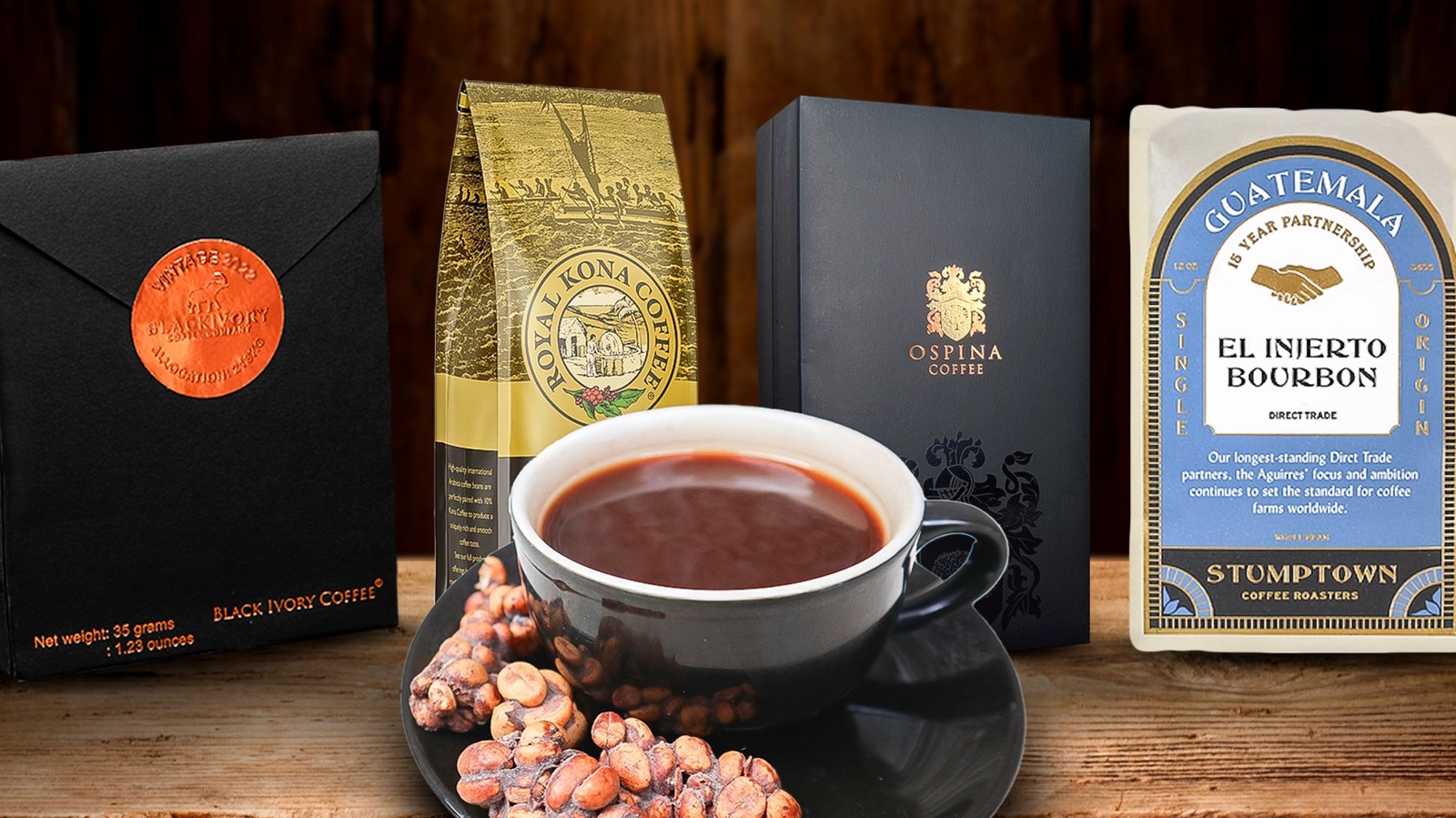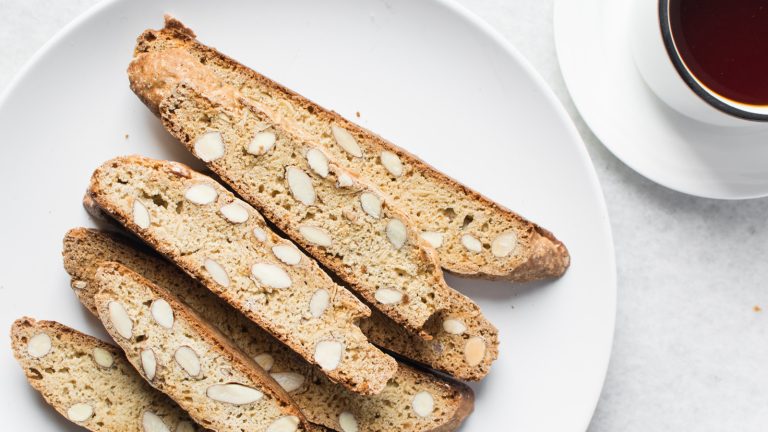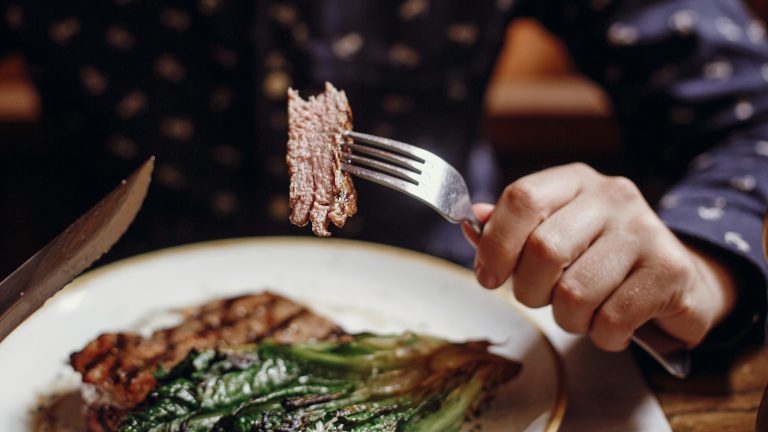We may receive a commission on purchases made from links.
To some people, coffee is simply a tasty cup of brown water, milk, and sugar that gives them the motivation to power through each day. For others, it’s an art, where each distinct coffee-growing region lays out a different palate of flavors and complex aromas, and the processing methods of coffee beans showcase their natural bitter, sweet, and earthy nuances. For those folks steeped in the intricate underbelly of the coffee world, rare varieties — whether from a hyper-specific growing region or renowned farm — are something to strive toward.
To be clear, just because a coffee is elusive and expensive doesn’t necessarily mean that it’s objectively better than your favorite joe from your local roaster. Nevertheless, the special varieties in this list — all of which are priced accurately as of June 2025 — offer a fascinating glimpse into the world of coffee cultivation and processing, highlighting why the industry is so highly regarded. It’s not just about coffee’s delicious flavor and unmatched ability to jumpstart our day — it’s the dedication of farmers, creative harvesting and processing practices, and the venerable legacy of the humble bean that makes coffee the drink with the largest cult following.
As a longtime professional barista and coffee expert, I’ve spent years exploring the depths of the coffee universe — from perfecting espresso shots to uncovering the rarest beans on the planet. So join me in a journey that spans the entire globe to uncover some holy grail brews, learn what makes them so precious, and find out if they’re more accessible than their coveted reputation lets on.
Kopi Luwak
Of all the world’s strange, rare coffees, Kopi Luwak — called civet coffee in English — is easily the most famous (some might say infamous). There’s nothing special about the beans themselves; instead, their notoriety comes from their processing method. The coffee comes primarily from Indonesia, where raw beans are eaten by Asian palm civets — an animal that looks like an adorable cross between a cat and a weasel. The undigested beans are then collected from the droppings, cleaned, and roasted. Sounds like a lot of effort (gross effort, at that) for some coffee, right? Some say that the process produces beans with a noticeably intense aroma, rich chocolatey flavor, and uniquely smooth earthiness, while others claim it’s all a load of — well, you know.
Even though it sounds like whimsical, funny poop coffee, Kopi Luwak showcases the industry’s much darker side. It was discovered by Dutch settlers in the 18th century, but it wasn’t until Oprah showcased the beans on her show in 2003 that it took off with the public on a global scale. As expected, high demand for one of the rarest coffees in the world led to increased fraud, with nearly four times as much Kopi Luwak sold than was being produced. But fraud isn’t the worst aspect of the high demand for these beans. To enhance production, civets are caged and force-fed coffee cherries, leading to a life of poor health and misery, all for around $50 to $100 per pound (wild Kopi Luwak fetches a much higher price).
Black Ivory Coffee
The beans that create Black Ivory Coffee undergo the same process as Kopi Luwak, but with one big difference: The coffee is harvested from elephant dung rather than the droppings of cat-like Indonesian weasels. I know what you’re thinking — don’t worry, this list isn’t made up of just excrement-related coffee. However, this unique process makes Kopi Luwak and Black Ivory some of the most famous rare coffees in the world.
The arabica cherries that eventually become Black Ivory Coffee are eaten by Asian elephants in Surin, Thailand, a remote province in a landlocked area of the country. The cherries are collected from the dung and then sent to a facility where they’re washed and processed by hand. Unlike Kopi Luwak, this coffee’s name is derived from the company that produces it — the only company that produces coffee where elephants play this role in production. Also, unlike Kopi Luwak, Black Ivory Coffee raises fewer ethical concerns, thanks to the company being relatively transparent about its treatment of animals and the positive impact the coffee production has on the rural community. However, it’s hard to say for sure if the practice is completely devoid of any forms of animal abuse.
The coffee, which sells for $150 for just over an ounce, is said to have notes of chocolate, malt, spice, and a slight grassy flavor that doesn’t hold onto coffee’s standard bitterness. The company claims the cup is delicious and distinctive, but plenty of coffee fans feel that it’s just a gimmick.
Panama geisha
Now that we’ve got the poop coffees out of the way, it’s time to lean into some rare varieties that are more likely to deserve their high price tag. Panama geisha (also spelled gesha) is an arabica bean variety originally discovered in the remote forests of Ethiopia in the 1930s. The plants were eventually brought to Central America to be studied, where it was found that they tolerated coffee leaf rust (a disease known to devastate coffee plants) more than other varieties. It was distributed in Panama in the ’60s, where it would eventually become the quintessential example of prized Panamanian coffee.
It wasn’t until 2005, at the beginning of the third and current wave of coffee, that Panama geisha garnered significant praise in coffee competitions, putting it on expert baristas’ radars. It’s now considered one of the finest coffees in the world, albeit not quite as rare and expensive as other varieties on this list. However, the geishas from both Finca Sophia and Hacienda la Esmeralda — the latter being the first to officially recognize the variety’s uniquely floral, complex attributes — are sought-after and pricy. The high-elevation coffee from these farms is said to be uniquely floral and sweet, with notes of jasmine and stone fruit. A bag of Hacienda la Esmeralda geisha sells for about $50 to $65 per 8 ounces, while the Finca Sophia geisha can go for about $85 per 4.5 ounces.
Jamaican Blue Mountain
Located on the eastern side of Jamaica, just North of Kingston, lies the majestic, mist-laced Blue Mountain range. When coffee was first brought to the island in the 18th century, it found a home in the rich, volcanic soil of the Blue Mountains. The mist and cloud cover in the mountains protect plants from full sun, and frequent rainfall keeps plants happy and moist. The high elevations here provide near-perfect growing conditions for this high-maintenance plant to thrive. In fact, to be considered real Jamaican Blue Mountain coffee, plants must be grown at a minimum of 1,800 meters in a specific 6,000-hectare area made up of about 15,000 smallholders and large estates.
Blue Mountain coffee is said to be full-bodied with mild acidity and richly sweet in flavor and aroma. It has light floral notes and is exceptionally balanced and clean, likely due to the use of arabica typica beans — a specific sub-variety, like geisha, that’s said to be among the highest quality arabica. In the U.S., this Champagne of coffees can sell for nearly $100 for a 1-pound bag.
St. Helena coffee
Located in the vast expanse of the South Atlantic lies St. Helena Island, the famous location of Napoleon Bonaparte’s exile and subsequent death, and a coffee-growing region that goes against the norm. Arabica coffee seeds were first brought to the remote island from Yemen, where they were planted throughout the sub-50 square mile island and thrived in the ideal growing conditions provided by the tropical climate and high elevations. Colder climates than other growing regions meant coffee ripened faster, resulting in a cup with floral and fruity notes, lively acidity, and a smooth body.
The coffee plants on St. Helena went largely unnoticed from when they were first planted in the 1700s until the mid-1800s, when Napoleon gave them recognition during his exile. This prompted their surge in popularity in France and England, but only for a brief period. Interest peaked for St. Helena’s coffee during the third coffee wave, but yield on the island is limited, so only the lucky few among us get to experience this historic brew.
The coffee is priced at $360 for a little over 1 pound of roasted beans, and about $220 for around 1 pound of green coffee beans; although prices vary slightly depending on the specific estate and variety sourced. However, this price isn’t necessarily indicative of its taste and quality. The high cost stems primarily from the lengthy and convoluted shipping required to get beans from the tiny, remote island to major cities around the world.
Yemeni coffee
When I think of Yemeni coffee, I picture the early days of coffee, when only the forces of nature, human will, and determination were responsible for shaping an exceptional brew. Yemen is closely tied to coffee’s origin story, although the first plants came from Ethiopia. But the modern coffee trade as we know it started in Yemen in the 17th century, where the port city of Al Mokha (rings a bell, doesn’t it?) was the world’s central hub for international coffee transport.
As of 2025, Yemeni coffee is much like it was centuries ago, albeit with increased factors that limit production, driving up the price. However, it isn’t nearly as expensive as the rarer brews on this list (think roughly $35 per 12-ounce bag). The harsh environment in Yemen restricts crops to small, mountain-side plots, and water access can be scarce, meaning that farming requires strenuous human intervention for plants to thrive. The ongoing civil war that began in 2014 is an obvious strain on coffee production as well.
In the Western coffee scene, Yemeni coffee is seen as a testament to the country’s rich and tumultuous history, built by spirited, dedicated people who have faced unimaginable hardships in recent years. It’s seen a resurgence in popularity lately, with immigrant-run cafés popping up in major cities to serve cardamom-infused drinks and share the chocolatey, woody, and uniquely berry-like brew of, arguably, the world’s most significant coffee region.
Los Planes pacamara
In the breathtaking mountains of Chalatenango, El Salvador, lies Los Planes farm — a roughly 170-acre coffee farm that stands as one of El Salvador’s finest. Los Planes practices traditional farm management, caring for plants in the old, tried-and-true way that was once seen as archaic, but is now revered as a venerable approach to farming. The farm is owned by Sergio Ticas Reyes, who inherited it from his grandfather.
Pacamara refers to a hybrid of two arabica varieties — maragogype and pacas — first developed in the 1950s. The coffee is praised for its complex flavor of savory, herby, and slightly spicy notes combined with a sweet, citrusy essence that makes for an incredibly complex cup. The beans are extra-large and hard, so they’re ideal for darker roasts, where their fruity and spicy characteristics can shine.
The pacamara from Los Planes farm earned the second-place Cup of Excellence award out of hundreds of entries and is considered one of the finest coffees in the world. Fortunately, it isn’t among the most expensive brews on this list — at only about $20 per 12 ounces — but it can be hard to track down a bag. The relatively high price and coveted status can be traced back to the bean’s reputation, coupled with Los Planes’ commitment to sustainable farming practices that benefit the local community and environment.
Kona coffee
Kona coffee is one of the most recognizable rare varieties of beans, and that’s largely because it comes from Hawaii — one of two states in the U.S. capable of growing coffee. It comes from the Kona coffee belt on the western side of the Big Island — a high-altitude, verdant region with nutrient-rich volcanic soil and plenty of rainfall to ensure healthy plants. The plants get sun, but are shaded by Hawaii’s naturally lush vegetation, preventing too much sun exposure. These favorable conditions produce an incredibly special coffee that’s known to be exceptionally smooth and caramel-like, with candy-sweet, creamy notes and slight hints of bitter earthiness that create a balanced cup.
On the mass coffee market, you’ll often find Kona blended with cheaper beans for a typical price (in Hawaii, Kona beans must make up at least 10% of the bag to be labeled Kona), but a 1-pound bag of 100% Kona usually goes for around $50. These high prices are largely due to the strict standards of U.S. farming, tedious organic farming methods, and fair compensation for workers in a high-cost-of-living area.
There’s a lot of debate over whether Kona coffee is worth its high price or if marketing is to blame for its relative popularity despite its cost. I’ve had the chance to try this esteemed brew, and I wasn’t thoroughly impressed with its flavor — especially compared to other coffees, like Panama geishas, that hover around the same price point.
Ospina Coffee
Ospina is a luxurious relic of the old coffee world with a fascinating history. Mariano Ospina Rodriguez’s company was born in Colombia all the way back in 1835. He went on to become Colombia’s president in 1857, having garnered national acclaim after establishing a wildly successful coffee empire. Rodriguez is often seen as the founding father of coffee in Colombia, which has become one of the world’s most prominent coffee-producing countries in the 21st century. Naturally, his coffee company — which is still alive and well, albeit unrecognizable from the humble brand of the 19th century — is one of the most famous (and expensive) coffee companies out there.
Ospina is essentially the Pappy Van Winkle of coffees. The growing conditions in the Andes mountains provide the plants with the ideal amount of rainfall, sun, and altitude for a superb brew. Like Blue Mountain, Ospina relies on top-tier arabica typica for all its products. Its farms practice hand-picking coffee cherries and strict quality control, limiting production to beans that meet a certain quality threshold. All of these factors contribute to the coffee’s astonishing price, with the most prestigious product selling for $2,500 for one 8.8-ounce bag. But, at the end of the day, this exorbitant price is largely about status and the novelty of getting one’s hands on coffee from an esteemed, time-honored brand.
El Injerto bourbon
El Injerto bourbon is a celebrated Guatemalan coffee, grown on the renowned El Injerto estate in the highlands of Huehuetenango. The farm’s history stretches all the way back to 1874, but it didn’t start producing coffee until about 1900. As of 2025, the third and fourth generations of the Aguirre family, who founded Finca El Injerto, man the helm; they turned the farm with humble beginnings into a mainstay of Guatemala’s renowned coffee. El Injerto has placed first in Cup of Excellence competitions (the most prestigious coffee quality competition) multiple times.
For those not in the know, no, bourbon coffee doesn’t contain alcohol. Bourbon is a subspecies of arabica, much like typica, and its name comes from its descendants, which were plants brought to the island of Réunion — a French department in the Indian Ocean formerly named Bourbon. Bourbon coffee is grown throughout parts of Africa and South America, but El Injerto’s bourbon is one of the most sought-after.
The bourbon variety from El Injerto is said to carry notes of praline, brown sugar, tangerine, and creamy chocolate with balanced acidity. It fetches a high price of about $25 for 10.5 ounces, due to the farm’s sustainable practices, commitment to preserving the forest, and a limited yield.
Pink bourbon
If you thought bourbon coffee was a wildly specific varietal of arabica, wait until you hear that there are sub-varieties within each arabica varietal (stay with me here). Pink bourbon is a specific type of arabica named for the pale pink cherries surrounding the coffee seed (or bean). It was once thought to be a genetic cross between red and yellow bourbon — also named for the color of the cherries — although there’s very little information about the origins of this elusive plant. We do know, however, that it likely isn’t related to the bourbon varietal at all, although its name remains, for now. The coffee was only officially discovered in 2013, so we’ll likely uncover more information about it in years to come, but as of right now, it’s largely agreed upon that the plant came from Colombia.
Despite its mysterious origins, pink bourbon coffee has been turning baristas’ heads in recent years. It’s said to have bright, fruity notes of melon, papaya, and peach, as well as intricate floral flavors all wrapped up in an incredibly balanced and mellow package. It’s not uncommon to find pink bourbon beans processed using anaerobic fermentation methods, which are said to highlight the coffee’s natural, honey-like sweetness. Pink bourbons are more ubiquitous than the other coffees on this list, and they usually sell for around $23 for an 8-ounce bag.





